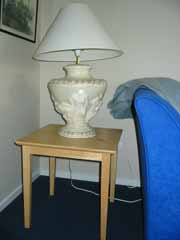Electrical Planning Work – Fittings and Fixtures for the Home
Electrical Planning
As previously mentioned there is an accompanying list of rooms and the requirements that they may have. For any project of either an existing building or a new one use this list to determine the capacity required for your system.
The age of the wiring in an existing building should be checked by a registered electrician and replaced if necessary.
While this is happening, new circuits can be run to upgrade the building to cope with the increased load. Obviously the cost of all this has to be considered as new circuits can also mean an upgrade of the main feed into the building and the distribution board as well as opening up walls and ceilings to run the new circuits.
Once this has been taken into consideration and approved, proceed with the following in mind.
- Confirm the fittings required and the circuits and power required to run them.
- Check the age of the existing if working in an old building. Make sure that it is up to code and will be capable of coping with the new planned additions.
- Check which fittings such as an oven require their own circuit? Also confirm those that may require surge or safety control devices both for the appliance and in the case of wet areas for the user.
- Confirm the positions of the new fittings and appliances and think about their location in regard to the existing and new circuits. What is more economical? What is a priority, and change the layout if practical?
- Are there enough power outlets per room? Total up the appliances to be used per room or what may eventually be used per room and ensure that it is adequate.
- Are the light switches and dimmers/controls in logical positions for ease of access to all users of the home?
- Are you catering for data throughout the building as well? If rewiring or putting in a new installation it is much easier to cater for this at the same time rather than later.
- Have you checked all the safety considerations such as tamper proof power outlets where young children are involved and safety earth leakage devices in wet areas?
- Free standing lamps and other appliances in the room have long cords or flexes that can be unsightly and easy to trip over. Have you considered how that may be overcome? For example the positions of the appliance and socket in planning, and/or the use of floor mounted sockets or fixed joinery units that may conceal power outlets.

The positioning of this power outlet was planned carefully so the table lamp could sit in the corner and the power cord was not going to be tripped over.
To continue this topic select from below for related articles.
